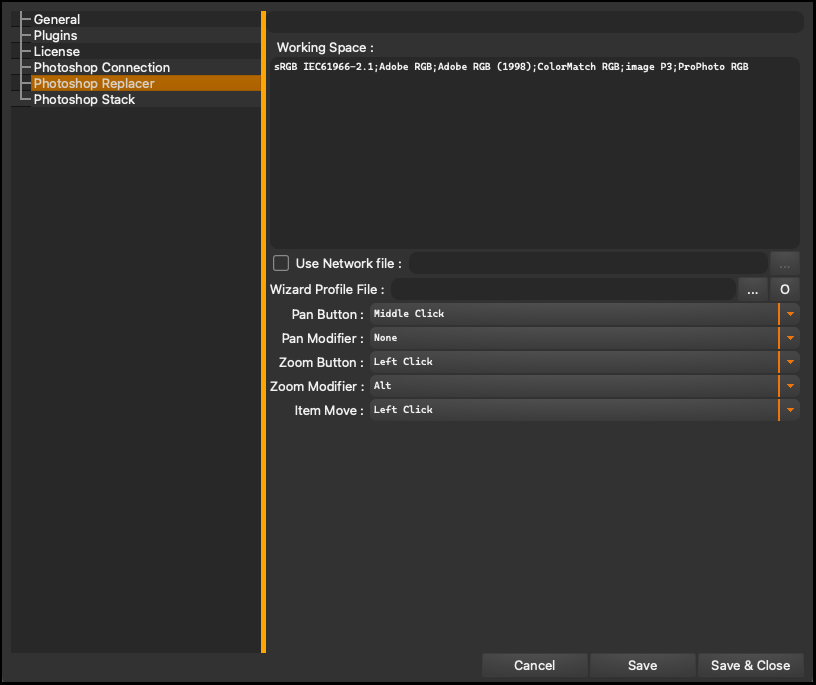Photoshop Replacer#
Inside this tab, users will find options that allow for the customization of the workspace, with a key element being the need to add a Wizard Profile File, which is essential for further work and personalization of processes in the application.

Working Space#
This section in the application allows users to manage the color spaces used in Adobe Photoshop. A color space, also known as a color profile, is a set of information that defines how colors are interpreted and displayed on the screen.

Within the “Working Space” tab, various predefined color spaces are available, such as “sRGB IEC61966-2.1, " “Adobe RGB,” “Adobe RGB (1998),” “ColorMatch RGB,” “image P3,” and “ProPhoto RGB.” Each color space has its unique properties and is suitable for different applications, such as web design, photography, printing, and more.
Additionally, users have the option to add their custom color spaces. To do this, enter the profile name exactly as it appears in Photoshop. If you want to add multiple profiles, separate the names of each profile with a semicolon.
Use Network File#
The options is a feature in the application that allows for the synchronization and sharing of working spaces among multiple users working in a network. This is particularly useful in environments where multiple artists or designers collaborate on the same project, requiring consistency in color settings and interpretation.
The feature enables the sharing of the same color space settings for all users in the network, ensuring uniform and consistent results. Users can select a shared working space and apply it to their workstations, guaranteeing that everyone sees and interprets colors in the same way.
On the right side, there is a “Browse” option that, when clicked, allows you to add a specific file to the network. This file should be placed in a specific location accessible to all collaborating users.
Wizard Profile File#
The Wizard Profile File allows for the definition and saving of a specific profile, in which the user sets a series of rules and parameters that will be automatically applied while working with the application. The button with three dots, located on the right side, allows users to choose the save path for the profile file.
Node Editor#
Certain keyboard and mouse buttons have been designated with functions to enhance navigation and manipulation of nodes. These shortcuts play a crucial role in interacting with the node editor, enabling swift and efficient creation and modification of node trees. Within the settings, each visible button offers the option to assign a custom shortcut to it.
